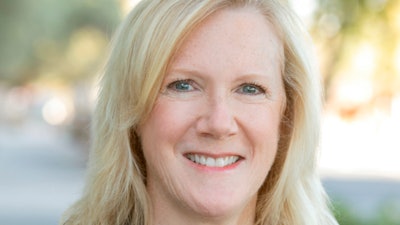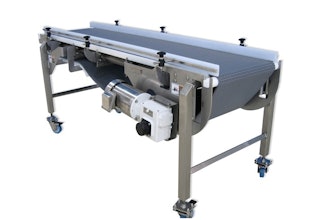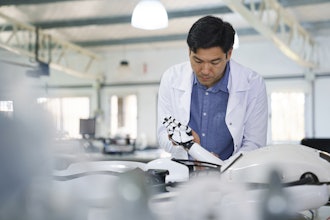
DETROIT (AP) — For more than a decade, Kathy Winter has been working to get autonomous vehicles on the road, first at auto supplier Delphi and then as general manager of Intel's autonomous transportation unit.
Now the 30-year industry veteran has been named chief operating officer of May Mobility, a 5-year-old autonomous vehicle startup, with a mission to scale up service in more markets.
The company is testing self-driving vehicles in Ann Arbor, Michigan, where it's headquartered, as well as Grand Rapids, Minnesota; and Arlington, Texas, all with human safety drivers. It also has run a pilot program in Hiroshima, Japan.
The Associated Press recently interviewed Winter about the future of autonomous vehicles. The interview has been edited for length and clarity.
Q: Five years ago you said autonomous vehicles would be widely in use before 2030, without humans driving. Is that still realistic?
A: When I look at the progress we're making, I do think it'll be well before 2030. May has been targeting the end of 2023 to have the (human) driver out. I think we're getting a lot more realistic about what it takes. They map very specific areas so that we know exactly where those vehicles are. And then you have things like Tele-assist, which happens to be what May is developing, that helps remotely should there be an issue. If you're operating a fleet, you have a way to be able to jump in there. That should be extremely rare.
Q: What is standing in the way of pulling the human safety driver out?
A: You have the hardware, the software and the driving policy, but then you have you have the regulatory issues and the liability issues. You think of the state-by-state regulations versus nationwide. Different parts of the world are moving at different paces. I hope that the U.S. really embraces this and tackles those problems, because we'd hate to be the last ones to get the driver out. The technology is progressing well. May has given 320,000 rides. I think it's more about these other barriers, and then consumer acceptance.
Q: You're joining May at a time of immense change in the autonomous vehicle business. Ford and Volkswagen just pulled the plug on Argo AI, capital is drying up. Does May have enough to get through?
A: They've been realistic on their spend and very conscious of return on investment. I think they've kept it right-sized for everything they've been doing. Because of that, their time to profitablity is much faster than a lot of the others in the industry who've had extremely high (cash) burn rates and extremely high investments with a return on investment that's way out there. We do make money. So the line of sight to profitability is much faster.
Q: How are you making money?
A: We actually run the service, whether the riders pay for it or whether a municipality or the private sector pays. The mission is to make transit that's complementary to what might be out there with big busing systems or in places that don't even have it. We use hybrid vehicles for efficiency. Make it safe, of course. Today there's a lot of areas where it's too small of a municipality. They can't afford a bus system and they don't have something that's wheelchair accessible. So this is a great opportunity where May could go in and get extended ridership.
Q: So you'd run a ride-hailing service and a fixed route shuttle?
A: We aren't fixed route shuttles. We're really more flexible than that. A user can go point-to-point in that vehicle, within a geo-designed area. The strategy is pick a specific area and map it well, and provide service in that area. You wouldn't go into an urban area that's got incredible mass transit. But if you went to, for example, Grand Rapids, Minnesota, you're not competing with all these other things. You map that area, but you're not trying to map every inch of the U.S. The team has done a great job of getting where they are today, and I'm just hoping to help them accelerate and scale it in a big way.
Q: Part of the problem in deploying autonomous vehicles is having to interact with humans who break the rules. How will May deal with this?
A: Our vehicles imagine thousands of scenarios every millisecond that could happen. It looks at the most likely scenarios and the highest risk scenarios, and the vehicle makes the decision what to do. So it is simulating and looking at something that's coming up. It really is how a person would think about things if they could think that fast. You would decide what's the odds that child standing on the street is going to run into the street. Or what's the odds that car coming over the center line is going to continue on that trajectory? If it comes up to something like a vehicle stopped, blinking lights, and the only way to get around it is to cross over the centerline and break what would normally be a rule. This is where something like Tele-assist could make that decision.
Q: Does it take the least risky option?
A: It's always good to go for the safe option. So yes, less risky.






















